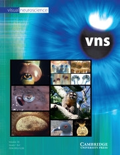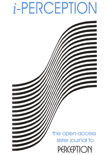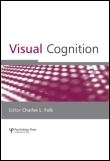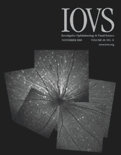
VISUAL NEUROSCIENCE
metrics 2024
Transforming Perception Through Neuroscience
Introduction
VISUAL NEUROSCIENCE is a distinguished journal dedicated to advancing the understanding of visual processing through neuroscientific research. Published by Cambridge University Press and indexed in Scopus, this journal emphasizes the latest experimental and theoretical insights into the neurological basis of vision. Since its inception in 1988, VISUAL NEUROSCIENCE has effectively contributed to the field, showcasing high-quality research and innovative findings. Although it currently sits in the Q3 and Q4 quartiles for Physiology and Sensory Systems respectively, its commitment to rigorous research has allowed it to maintain relevance in a diverse array of scientific disciplines. Researchers, professionals, and students alike will find value in its comprehensive articles that explore the complexities of visual perception and associated neural mechanisms. The journal does not offer open access options, enhancing the exclusivity of its researched content. Set against the backdrop of Cambridge, England, VISUAL NEUROSCIENCE stands as an essential platform for the dissemination of knowledge in the vibrant field of visual neuroscience.
Metrics 2024
 0.47
0.47 1.10
1.10 2.20
2.20 88
88Metrics History
Rank 2024
Scopus
IF (Web Of Science)
JCI (Web Of Science)
Quartile History
Similar Journals

JOURNAL OF NEURO-OPHTHALMOLOGY
Fostering Collaboration for Neuro-Ophthalmic ExcellenceJOURNAL OF NEURO-OPHTHALMOLOGY is a premier academic publication dedicated to the interdisciplinary study of neuro-ophthalmic conditions, providing a vital platform for the dissemination of groundbreaking research and clinical insights. Published by Lippincott Williams & Wilkins, this journal has established itself within the field, maintaining a strong impact factor and demonstrating a significant commitment to both the medical and neurological communities, categorizing in Q2 for Medicine and Ophthalmology, and Q3 for Neurology (clinical). With an ISSN of 1070-8022 and an E-ISSN of 1536-5166, the journal boasts a rich history from its inception in 1994, extending its reach to 2024. Although it does not operate under an open-access model, it still prioritizes the accessibility of vital research findings to healthcare professionals, researchers, and students alike. Located in Philadelphia, PA, USA, the JOURNAL OF NEURO-OPHTHALMOLOGY continues to play an essential role in advancing knowledge, fostering collaboration, and encouraging the exchange of ideas to improve patient care and outcomes in the realm of neuro-ophthalmology.

VISION RESEARCH
Innovative insights into the science of sight.VISION RESEARCH, published by PERGAMON-ELSEVIER SCIENCE LTD, is a leading journal in the field of visual sciences, focusing on the diverse aspects of ophthalmology and sensory systems. With a rich publication history dating from 1961 and extending into 2024, this journal has become a cornerstone for researchers and practitioners alike, offering critical insights into vision science. The journal holds a commendable Q2 ranking in Ophthalmology and a Q3 ranking in Sensory Systems, evidencing its significant contribution to these fields. VISION RESEARCH also boasts a respectable Scopus ranking, placing it in the 66th percentile for Ophthalmology and 46th percentile for Neuroscience. Although it is not an Open Access journal, readers can access its impactful research through various academic institutions. With its emphasis on innovative research and developments in understanding visual perception, VISION RESEARCH is an essential resource for scientists, clinicians, and students dedicated to advancing the understanding of vision and its associated mechanisms.

BRAIN AND LANGUAGE
Fostering Scholarly Dialogue in Brain and Language StudiesBRAIN AND LANGUAGE is a premier journal published by Academic Press Inc Elsevier Science, dedicated to fostering scholarly communication in the fields of Cognitive Neuroscience, Linguistics, Psychology, and Speech and Hearing. With its ISSN 0093-934X (Print) and 1090-2155 (Online), the journal has established a significant presence since its inception in 1974, continuing to provide valuable insights into the intricate relationship between brain function and language processing. This journal is highly regarded, boasting a 2023 ranking of Q1 in Linguistics and Language, reflecting its influential contributions to the field, alongside Q2 rankings in categories such as Cognitive Neuroscience and Experimental Psychology. With a rigorous peer-review process, it serves as an essential resource for researchers and professionals seeking to deepen their understanding of language mechanisms and their cognitive underpinnings. Despite not being an Open Access journal, BRAIN AND LANGUAGE ensures that its articles are widely accessible and of high quality, making it an indispensable platform for both emerging and established scholars aiming to expand the boundaries of research in language and cognition.

I-Perception
Bridging Minds: Where Perception Meets InnovationI-Perception is a leading open-access journal published by SAGE Publications Ltd, specializing in the intricate interplay between perceptual processes across various disciplines such as Artificial Intelligence, Experimental and Cognitive Psychology, Ophthalmology, and Sensory Systems. With an ISSN of 2041-6695, this UK-based journal has been a vital resource since its inception in 2010. I-Perception occupies esteemed positions within several academic categories, including a Q2 ranking in Ophthalmology and Q3 rankings in both Artificial Intelligence and Experimental and Cognitive Psychology. These metrics highlight the journal’s relevance and impact, particularly in fostering interdisciplinary collaborations among researchers and practitioners. Accessible online, I-Perception encourages the dissemination of innovative findings and theoretical advancements, making it an essential platform for those passionate about understanding perception in its myriad forms. The journal's commitment to excellence is further reflected in its Scopus rankings, showcasing its influence within the respective realms of Medicine, Neuroscience, and Computer Science.

VISUAL COGNITION
Advancing Insights in Cognitive ProcessingVISUAL COGNITION, published by Routledge Journals, Taylor & Francis Ltd, is a leading academic journal dedicated to the nuanced understanding of visual processing and cognition. Since its inception in 1994, the journal has become a pivotal resource for researchers and practitioners in fields including Cognitive Neuroscience and Psychology, having achieved a distinguished Q1 ranking in Arts and Humanities and impressive standings among its peers in experimental and cognitive psychology. With an impact factor reflecting its scholarly significance, VISUAL COGNITION serves as a forum for high-quality research articles that shed light on the cognitive aspects of visual perception. Although it operates under a subscription model, the journal remains committed to disseminating knowledge that inspires both established and emerging scholars alike. For those interested in the latest advancements in visual cognition, this journal promises a wealth of insights and rigorous scholarly dialogue.

INVESTIGATIVE OPHTHALMOLOGY & VISUAL SCIENCE
Advancing the frontiers of vision science.Investigative Ophthalmology & Visual Science (IOVS) is a leading academic journal published by the Association for Research in Vision and Ophthalmology, dedicated to advancing the field of ophthalmology and visual science. With an impressive impact factor and ranking in the Q1 category for both Ophthalmology and Sensory Systems, IOVS is well-respected for disseminating cutting-edge research and innovative discoveries. Established in 1977, this Open Access journal allows for broad accessibility to pioneering studies, fostering collaboration among researchers, clinicians, and students. The journal has consistently maintained high visibility in the academic community, evidenced by its robust rankings in Scopus, including Rank #16 in Ophthalmology. As it continues to pave the way for future developments in the understanding and treatment of ocular diseases, IOVS serves as an invaluable resource for those immersed in the complex field of visual science.

Annual Review of Vision Science
Unveiling Trends in the Science of SightThe Annual Review of Vision Science is an esteemed journal published by ANNUAL REVIEWS, focused on advancing the field of vision science through comprehensive reviews that synthesize current research and emerging trends. With an ISSN of 2374-4642 and E-ISSN 2374-4650, this journal has established itself as a leading source of high-quality academic content, boasting a prestigious Q1 ranking in the fields of Medicine (miscellaneous), Neurology (clinical), and Ophthalmology as of 2023. Its impressive Scopus rankings further attest to its influence, placing it in the top 5 within ophthalmology (96th percentile) and 31st in clinical neurology (92nd percentile). The journal aims to serve researchers, clinicians, and students alike by providing critical insights into vision science, thereby enhancing understanding and fostering innovation in both basic and applied research. Although not open access, the Annual Review of Vision Science remains a vital resource for those engaged in the study and application of vision science worldwide.

Brain-Computer Interfaces
Bridging Neuroscience and EngineeringBrain-Computer Interfaces is a pioneering journal dedicated to the interdisciplinary exploration of neurotechnology, highlighting advancements and innovative approaches in the realm of brain-computer interface (BCI) research. Published by Taylor & Francis Ltd in the United Kingdom, this journal operates under a stringent peer-review process, ensuring high-quality contributions that advance the field. With a converged publication period from 2014 to 2024, it serves as a vital resource for researchers, professionals, and students alike, offering insights into areas such as behavioral neuroscience, biomedical engineering, and human-computer interaction. The journal is indexed in Scopus, with varying quartile rankings reflecting its status in several categories, including a commendable Q2 in Electrical and Electronic Engineering, positioning it among the key publications in the field. As BCIs continue to revolutionize interactions between humans and technology, Brain-Computer Interfaces remains an essential platform for sharing groundbreaking research, fostering collaboration, and inspiring future innovations.

Journal of Optometry
Advancing vision science for a brighter future.The Journal of Optometry, published by Elsevier, is a leading open access journal dedicated to advancing the field of optometry and vision science. With an ISSN of 1888-4296 and an E-ISSN of 1989-1342, this journal serves as a pivotal platform for researchers, practitioners, and academics alike to disseminate and engage with high-quality original research and review articles. As of 2023, the journal holds an impressive Q2 ranking in the Optometry category, demonstrating its influence and relevance, particularly as it ranks #2 out of 12 in the Health Professions - Optometry category on Scopus with an 87th percentile. Since becoming open access in 2008, the Journal of Optometry has prioritized accessibility and the exchange of ideas, enriching the scholarly community and enhancing practical application in clinical settings. The journal welcomes submissions that push the boundaries of ocular research, clinical practices, and the education of optometry professionals, making it an essential resource for anyone invested in the future of eye health.

Art & Perception
Transforming Perspectives on Art and Human ExperienceArt & Perception, published by BRILL, stands as a pivotal journal in the exploration of visual arts and the psychology of perception. With a robust ISSN of 2213-4905 and E-ISSN of 2213-4913, this journal has established itself as an indispensable resource for researchers, professionals, and students in the fields of Applied Psychology, History, and Visual Arts. As of 2023, it enjoys impressive rankings in its categories, with a Q3 status in Applied Psychology and a Q1 status in both History and Visual Arts, reflecting its scholarly impact. The journal operates from its base in Leiden, Netherlands, and spans an impressive coverage from 2013 to 2024. While it does not currently offer open access, its commitment to disseminating valuable research makes it an essential read for those seeking to deepen their understanding of art perception and its psychological underpinnings. With a Scopus rank of #39 out of 667 in Arts and Humanities, and a remarkable 94th percentile, Art & Perception continues to shape discourse and innovation at the intersection of art and psychology.